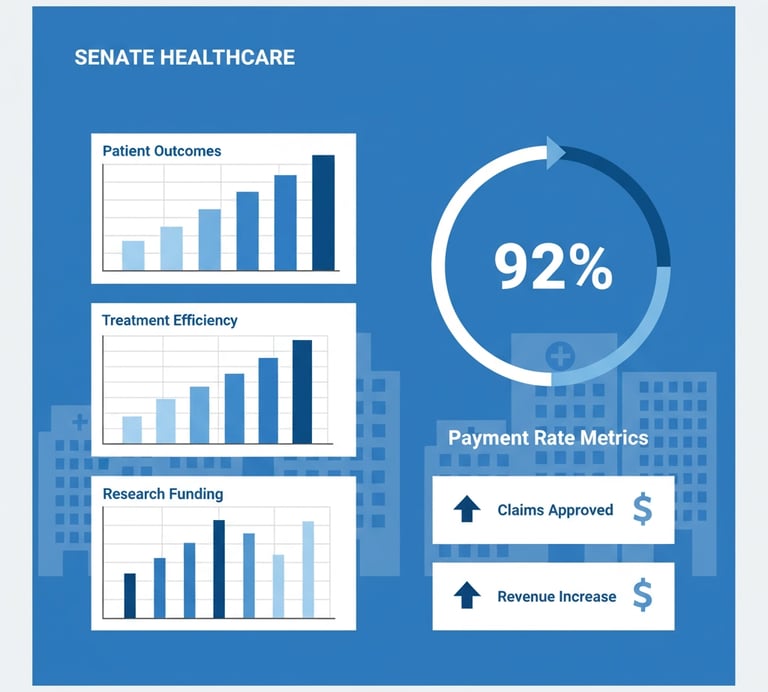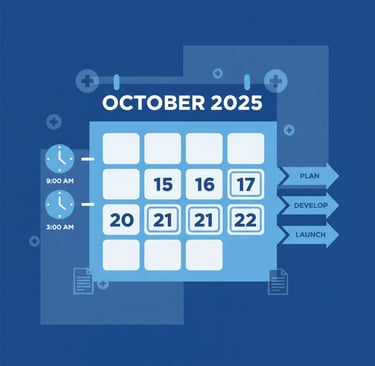CMS Finalizes FY 2026 Hospice Payment Rule: What Agencies Need to Know
In October 2025, CMS released the final 2026 Hospice Payment Rule, increasing nationwide payments and announcing new quality and eligibility standards. Here's a concise, actionable summary for hospice and home health agency owners.
10/30/20253 min read


The Centers for Medicare & Medicaid Services finalized the FY 2026 Hospice Wage Index and Payment Rate Update final rule on August 1, 2025, with implementation beginning October 1, 2025. This comprehensive update delivers significant financial benefits while introducing new compliance requirements that every hospice agency owner needs to understand immediately.
Major Payment Increases Signal Industry Growth
CMS is delivering a substantial 2.6% increase in Medicare hospice payment rates for fiscal year 2026, translating to an estimated $750 million boost in total payments compared to FY 2025. This increase stems from a 3.3% inpatient hospital market basket percentage increase, reduced by the legally required 0.7 percentage point productivity adjustment.
The payment structure reflects CMS's recognition of rising operational costs and workforce challenges facing hospice providers nationwide. For agency owners evaluating strategic partnerships or exit opportunities, these improved payment rates could significantly impact agency valuations heading into 2026.
Updated Payment Rates by Care Type
The final FY 2026 hospice aggregate cap amount reaches $35,361.44, up from $34,465.34 in FY 2025. Here's how specific payment rates break down:
Routine Home Care (Days 1-60): $230.83 (increased from $224.52)
Routine Home Care (Days 61+): $181.94 (increased from $176.92)
Continuous Home Care (24 hours): $1,674.29 (increased from $1,618.59)
Inpatient Respite Care: $532.48 (increased from $518.78)
General Inpatient Care: $1,199.86 (increased from $1,170.04)
Rural hospices will see a slightly higher overall estimated payment update of 3.0%, while urban hospices receive approximately 2.6%, reflecting updated wage data and geographic cost variations.


Quality Reporting Becomes Make-or-Break Factor
The new rule introduces serious financial consequences for quality reporting non-compliance. Hospice agencies failing to submit required quality data face a devastating 4 percentage point penalty, resulting in a 1.4% payment reduction compared to FY 2025 rates instead of the 2.6% increase.
This penalty structure applies across both Medicare and Medicaid rates, making quality data submission absolutely critical for financial sustainability. Agency owners should immediately audit their quality reporting processes and ensure comprehensive data collection systems are in place.
For agencies already struggling with regulatory compliance challenges, this penalty could accelerate the need for strategic partnerships or operational restructuring to maintain profitability.
Streamlined Admission and Documentation Requirements
CMS introduced two significant operational changes that could improve workflow efficiency:
Expanded Admission Authority
The physician member of the interdisciplinary group (IDG) may now recommend admission to hospice care, aligning with existing certification requirements. This change provides greater flexibility in admission processes while maintaining appropriate medical oversight.
Simplified Face-to-Face Encounter Documentation
Perhaps most practically significant, the rule allows signed and dated clinical notes to satisfy face-to-face encounter attestation requirements, eliminating the need for separate attestation forms. This streamlined approach reduces administrative burden while maintaining compliance standards.
These documentation improvements come at a crucial time when workforce shortages continue challenging agencies across the industry.
Implementation Timeline and Strategic Considerations
All updated rates and requirements take effect October 1, 2025, and remain valid through September 30, 2026. Agency owners must update billing systems, verify wage index classifications, and adjust financial projections accordingly.


Geographic Impact Variations
The differential payment impacts between rural (3.0%) and urban (2.6%) areas require location-specific analysis for multi-site operators. Agencies with diverse geographic footprints should model these variations carefully when projecting 2026 financial performance.
Competitive Landscape Implications
These payment increases, combined with ongoing Medicare payment uncertainties in other sectors, may accelerate consolidation activity in the hospice market. Well-positioned agencies with strong quality reporting capabilities could become attractive acquisition targets.
Maximizing the Opportunity
Smart agency owners are already positioning to capitalize on these favorable payment changes. The combination of increased reimbursement rates and streamlined administrative requirements creates an ideal environment for growth and operational optimization.
However, the quality reporting penalty structure means agencies with compliance weaknesses face an increasingly difficult competitive position. For owners considering their long-term strategy, these rule changes highlight the importance of robust operational infrastructure and quality management systems.
If you're evaluating strategic options for your hospice agency, these payment improvements could significantly impact your agency's value proposition. The enhanced reimbursement environment, combined with streamlined regulatory requirements, creates compelling opportunities for both growth-focused operators and those considering strategic partnerships or transitions.
The FY 2026 rule changes represent more than routine payment updates. They signal CMS's commitment to supporting quality hospice care while maintaining accountability standards. Agency owners who proactively adapt to these changes while maintaining excellence in quality reporting will be best positioned to thrive in the evolving hospice landscape.
For detailed implementation guidance and strategic planning support, consider consulting with healthcare advisory specialists who understand both the regulatory environment and market dynamics shaping hospice agency values in 2026.
Unlock Your 30-Minute Agency Succession Review
Maybe you're ready to expand your reach, or perhaps it's time to consider your legacy and the future of your business. Either way, it all begins with a conversation. Schedule a confidential, no-obligation call to explore what the future might hold for you and your business.
Complete the form, and we'll reach out for a chat...


© 2025 SENATE HEALTHCARE LLC.
ALL RIGHTS RESERVED


